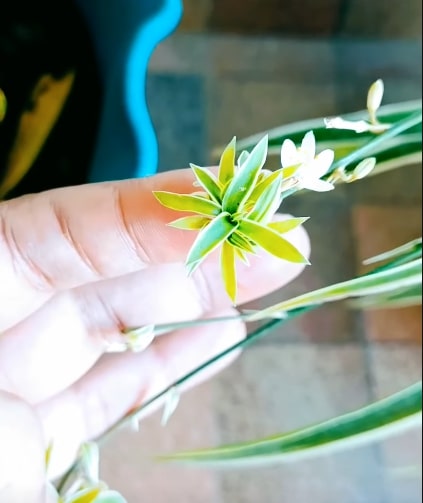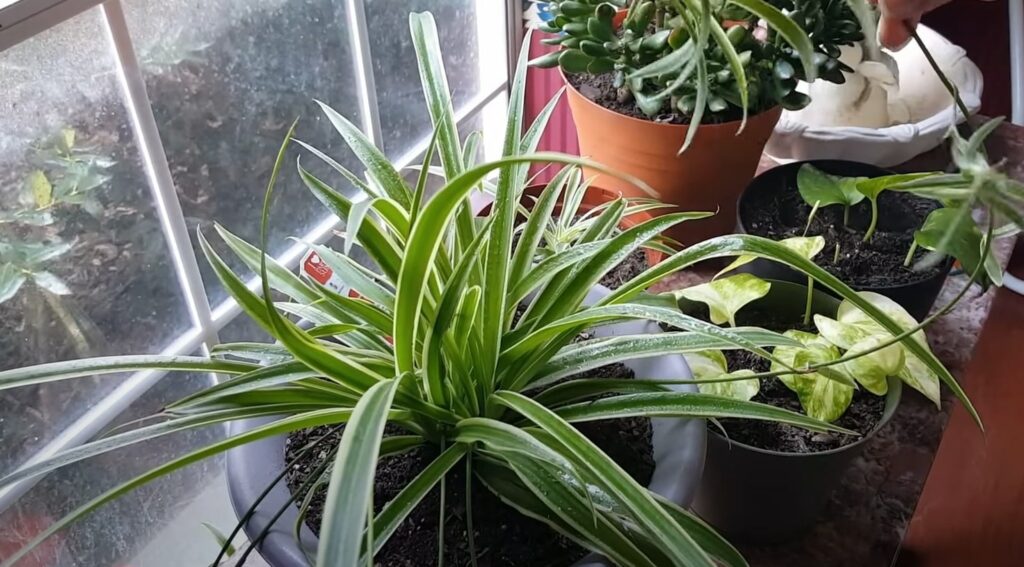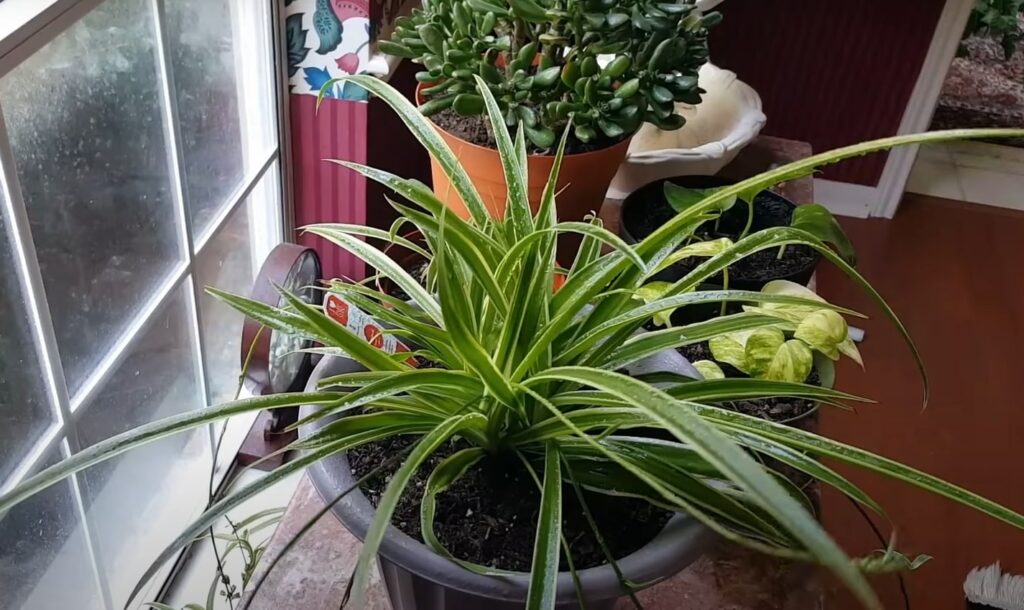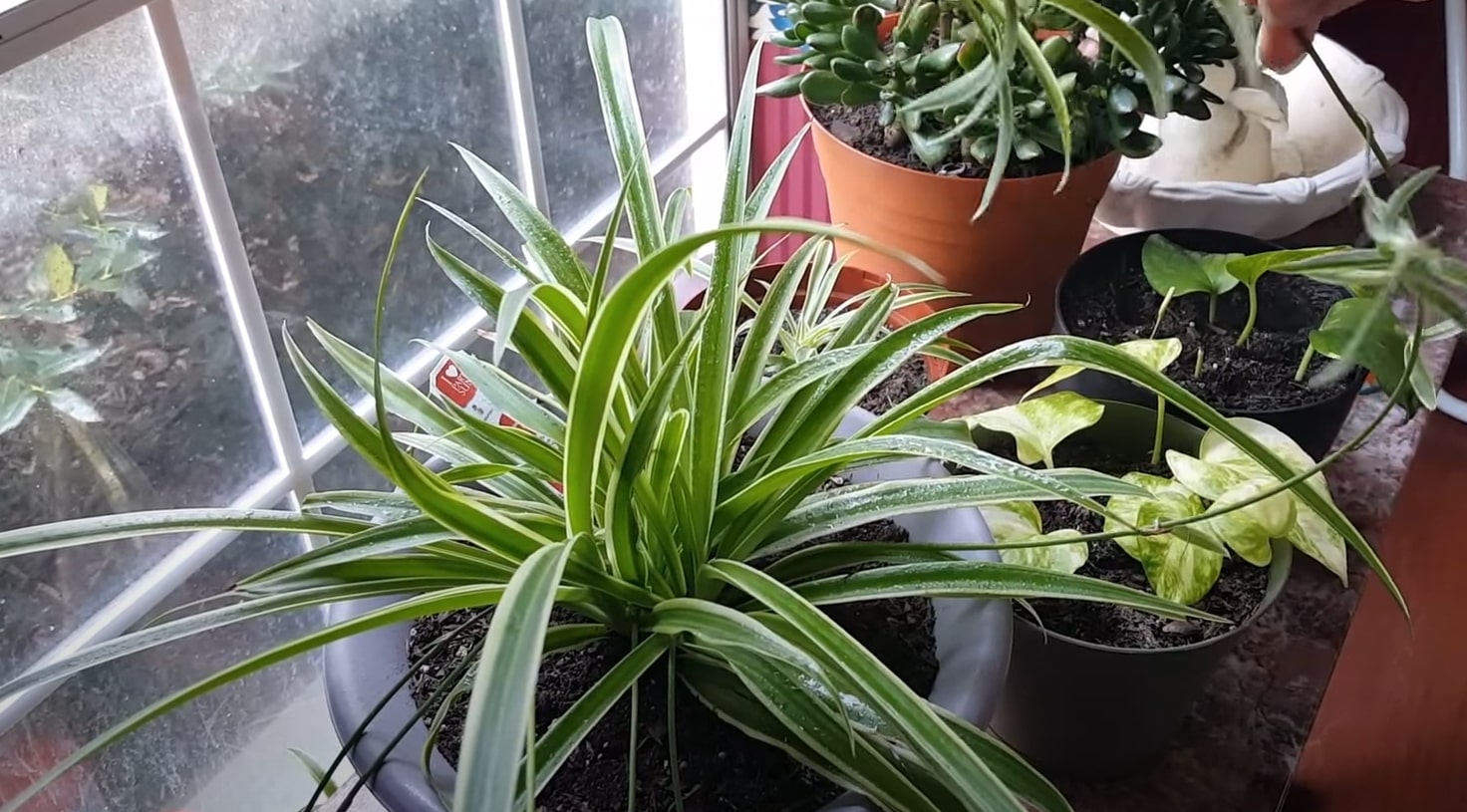The Hawaiian Spider Plant, also known as Chlorophytum comosum ‘Hawaiian,’ is a gorgeous houseplant that brings the beauty of the tropics right into your living space.
With its striking green and white-striped leaves, this charming plant is not only eye-catching but also easy to care for, making it a perfect choice for beginners and experienced plant enthusiasts alike.
In this article, we’ll explore everything you need to know about this tropical gem, from its origins and care tips to its unique features and how to propagate it.
| Feature | Details |
|---|---|
| Common Name | Hawaiian Spider Plant |
| Scientific Name | Chlorophytum comosum |
| Origin | Native to South Africa, not native to Hawaii |
| Plant Type | Perennial houseplant |
| Size | Up to 2 feet (60 cm) in height |
| Foliage | Long, arching green leaves with white stripes |
| Light Requirements | Bright, indirect light |
| Watering | Allow the soil to dry slightly between waterings |
| Temperature | Average room temperatures between 65°F to 75°F |
| Humidity | Prefers moderate to high humidity |
| Soil | Well-draining potting mix |
| Propagation | Easily propagated through plantlets or divisions |
| Toxicity | Non-toxic to humans and pets |
| Maintenance | Low maintenance, occasional pruning of brown tips |
| Common Issues | Overwatering can lead to root rot |
| Special Features | Air-purifying qualities, safe for pets |
Find the full list of all types of spider plants here.
Propagation Of Hawaiian Spider plant

Propagation of the Hawaiian Spider Plant refers to the process of creating new plants from existing ones. There are two primary methods of propagating the Hawaiian Spider Plant:
- Division Method: This involves separating the “pups” or baby plants that grow at the base of the mature plant. Gently remove the pups, making sure they have some roots, and then plant them in their individual pots or directly in the soil. Division is a simple and effective way to increase your spider plant collection.
- Stem Cuttings: Another common propagation method is using stem cuttings. Take healthy cuttings from the plant’s stems, making sure they have at least a few inches in length. Remove any lower leaves and place the cuttings in water or a well-draining potting mix until they develop roots. Once rooted, transplant the cuttings into their own containers.
The Hawaiian Spider Plant is relatively easy to propagate, and with the right care, the new plants will thrive and eventually produce their own “pups” or baby spider plants. This propagation process allows you to expand your collection or share the plant’s beauty with friends and family.
Soil For Your Hawaiian Spider Plant
For your Hawaiian Spider Plant, choose a well-draining potting mix with peat moss or coir to retain moisture without waterlogging.
Adding perlite or vermiculite enhances drainage and aeration. Incorporate compost or organic matter for nutrients, aiming for a slightly acidic to neutral pH level (6.0 to 7.0).
Commercial potting mixes designed for indoor plants or tropical species are convenient options. Use pots with drainage holes to avoid waterlogging and promote healthy root development. With the right soil and care, your Hawaiian Spider Plant will thrive and flourish.
How Often Should I Water Hawaiian Spider Plant

Water your Hawaiian Spider Plant about once a week, but adjust based on factors like temperature, humidity, and the potting mix.
Always check the soil moisture before watering and avoid overwatering, allowing the soil to partially dry out between waterings to prevent root rot. During the active growing season, it may need more frequent watering, while in the dormant period, it may require less.
Pay attention to signs of water stress or overwatering, such as wilting or yellowing leaves, and adjust your watering routine accordingly. Proper watering will ensure your Hawaiian Spider Plant stays healthy and vibrant.
Humidity Requirements For Your Hawaiian Spider plant
The Hawaiian Spider Plant prefers moderate to high humidity levels. Here are some brief guidelines for maintaining the right humidity:
- Ideal Range: Aim for humidity levels between 40% to 60% or higher.
- Misting: Regularly mist the plant’s leaves with water to increase humidity around it.
- Humidity Tray: Place a humidity tray filled with water and pebbles beneath the plant to create a humid microenvironment.
- Grouping Plants: Cluster your Hawaiian Spider Plant with other indoor plants to collectively increase humidity.
- Room Humidifier: Consider using a room humidifier, especially during dry seasons or in arid climates.
- Avoid Dry Drafts: Keep the plant away from heating vents or areas with dry drafts.
Maintaining adequate humidity levels will promote healthier growth and prevent issues like brown leaf edges or leaf tips, common indicators of low humidity stress in the Hawaiian Spider Plant.
Light Requirements For Hawaiian Spider Plant
The Hawaiian Spider Plant thrives in bright, indirect light, making it an excellent choice for indoor spaces. It prefers moderate to bright light conditions, but direct sunlight should be avoided, as it can scorch the leaves.
Placing the plant near a window with a sheer curtain or in a spot where it receives filtered sunlight ensures it gets the right amount of light. It can also tolerate lower light conditions, but this may slow down its growth and affect its vibrant foliage.

Regularly rotating the plant to ensure even light distribution on all sides promotes balanced growth. Overall, providing the Hawaiian Spider Plant with appropriate light conditions will keep it healthy, happy, and visually appealing in your home or office.
How To Grow Hawaiian Spider Plant Bushier
To encourage a bushier growth habit in your Hawaiian Spider Plant, several simple steps can be taken. Regularly prune the plant by removing any leggy or overgrown stems, cutting them back close to the base.
This stimulates new growth and encourages the plant to produce more offshoots or “pups.” Additionally, consider propagating these pups and replanting them alongside the mother plant to create a denser, fuller appearance.
Providing adequate light and proper watering while avoiding over-fertilization can also contribute to a bushier growth.
Remember to rotate the plant occasionally to ensure even exposure to light on all sides. By following these practices, you can help your Hawaiian Spider Plant develop a lush and bushier appearance, enhancing its beauty in your indoor space.
If you are into spider plants, explore other varieties of it, like the Bonnie curly spider plant as well.
Hawaiin Spider Plant: Key Takeaways
The Hawaiian Spider Plant is a wonderful addition to any indoor space, bringing a touch of the tropics with its vibrant foliage and easy-to-care-for nature. With its striking appearance and resilience, it has charmed plant enthusiasts worldwide.
Remember to provide it with the right amount of light, water, and occasional pruning to keep it flourishing. Whether you’re a seasoned plant lover or just starting your green journey, the Hawaiian Spider Plant is sure to brighten your home and bring a sense of tropical paradise.
So, go ahead and embrace the beauty of this fascinating plant, and may it continue to bring joy and a breath of fresh air to your living spaces. Happy gardening!

Leave a Reply